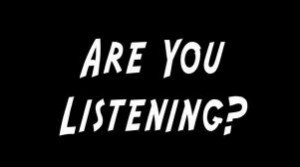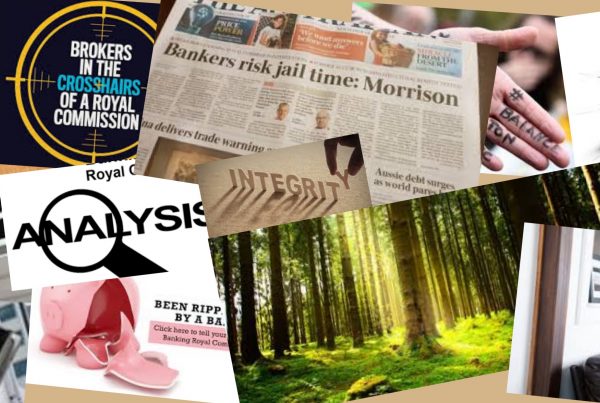As with all forms of communications, there’s hearing, and then listening. Hearing is mechanical, but as public relations or corporate affairs practitioners we have always needed to constantly practice the art of truly listening and take to heart what is being said. Understand first, then be understood.
This basic law of communications hasn’t changed with new media, but there are two differences:
- Social media means most companies now must listen – can’t run, can’t hide – and the community knows it. So the risk factor has changed.
- We need to be more responsive because it’s rapid fire communications. And sometimes that trickle of comments, unless stemmed, can become a flood, and then become a tsunami.
The reality is social media has forced conservative companies to change – it’s less about the hype of push marketing or advertising or corporate spin, and more about the integrity of good quality public relations or corporate affairs.
Below is an article by Jeremy Porter analysing ‘listening’ in social media – a personal experience – which contains some thoughtful comments. And further down are some additional comments of ours.
What does it mean to ‘listen’ on social media?
How to let your audience know there’s a live body tweeting or posting updates on Facebook.
By Jeremy Porter | Posted: December 8, 2011
The physical presence of ears does not make you a good listener. Listening makes you good listener. If you’ve created a Twitter, Facebook or other social media account for your brand, congratulations, you now have ears. Are you listening?
Most brands realize they need to be present in social media, and many may be listening, but you wouldn’t know it. You wouldn’t know it because they’re not engaging their audiences.
They’re not part of the conversation. If somebody says something nice or not-so-nice about their brands, there’s no response. Are they responding behind the scenes? It doesn’t matter. Perception is reality with social media. We need to see you in social media to know you care.
This post is motivated by my personal experience trying to engage with brands online. In most cases, I’ve raved about how awesome I think some person, place or thing is. You know, an unsolicited endorsement or recommendation to my friends and followers. In most cases, I’ve used their Twitter handle (or Facebook page, URL, etc.). I know somebody has seen it on the other end, but no love. What gives?
I suspect the unresponsiveness stems from one (or more) of the following:
- Lack of experience using the tools of the trade. Brands don’t know how to listen.
- Lack of resources dedicated to social media. The brand only has one person reviewing social media one hour a day (or less).
- Gag orders. Organizations that don’t allow employees to engage—or have had a bad experience in the past—has everyone gun shy now.
- They don’t care. It’s not even on their radar. They’re above it.
- Too much to handle. It’s possible to reach a level where you can’t possibly listen to it all, or engage with everyone. Justin Bieber comes to mind. Then again, Lady Gaga is notorious for engaging with her fans … it’s worked pretty well so far.
Here are some suggestions for starting out listening and engaging with your audiences:
- Create a basic social media policy. Here’s a list of 57 social media policies you can draw inspiration from. Don’t make it read like an “employee handbook,” but rather “guidelines for engaging.” Things won’t always go smoothly, but make a concerted effort to get better over time.
- Monitor your Twitter and Facebook accounts more closely. Set up alerts so you’ll know the second somebody says something about you. If it’s nice, say thank you. If it’s a problem, help solve it. Do it publicly at first. If it needs to be taken offline, do so. Once solved, encourage them to share their experience.
- Use the search feature of Twitter to create some searches for your brand name. You might want to create some searches for common terms in your business, followed by a question mark. As an example, I monitor “journalism”? to see what questions people are asking about journalism. It’s a great way to discover new people and conversations related to what you do.
- Act online like you would offline. Sometimes I picture the person I’m going to engage with and ask myself if I’d say offline what I’m about to send them online. It makes things more personal for me. It’s also a good idea to use your manners here. Say please and thank you.
- Pay it forward. Plenty of brands reply and say “thanks for the RT” or “thanks for following.” It can seem a little robot-like after a while. I can name a dozen or so high-profile Twitter users who have RT’d something I said about them. For me, this is a big one. It shows me they were listening—and, they thought enough to share with their network.
It’s not all or nothing. Start slowly. For me, I think a basic requirement should be to at least engage with a couple of people per day. If somebody takes the time to mention you, retweet you, comment on your wall, or like your page, the least you can do is thank them or ask for their opinion on something.
What do you think? How can brands new to social media do a better job listening to, and engaging with, their most important audiences?
Jeremy Porter is the founder of Journalistics.com, where a version of this article first appeared.
We would add for good quality public relations and corporate affairs:
- Use a blogsite to put your message on the record. Yes, blogs are about pushing your message out, but it’s an opportunity for others to comment; and once you’re listening people actually want to know you have heard. And a blog is a hub for all your social (and other) media channels. We find the public expects you to have a blog and will go looking for it. It’s an investment, yes, but our clients have found that it’s not that arduous.
- Be aware that the next big change in social media is going to be video: video blogs and interviews, peer-to-peer video conferencing, online TV – or that’s what we’re being told by the experts, like Cisco.
- You don’t need to be an industry leader – with social media you can follow a trend. Let someone else pay first-user prices, and make the mistakes for you.





